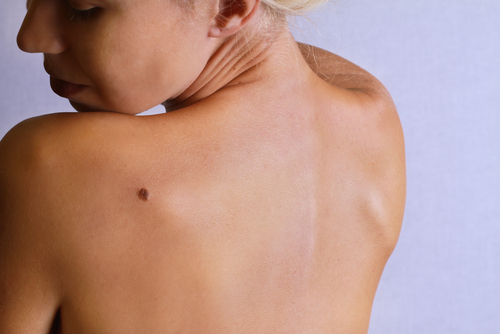Moles and Spots
It is important to understand your treatment option for moles and spots. The following information from GK Dermatology, skin specialists in Weymouth MA, may help.
What are Moles?
Moles are formed by groupings of pigment cells (melanocytes). It’s important to examine your skin regularly to look for any changes in the color, texture, or appearance of any moles or other skin growths. The ABCDE’s of pigmented lesions (shown on the right) is an easy way to remember the most common features of abnormal (atypical) moles and melanoma. Performing periodic skin self-examinations can help in the early detection of skin cancer. Specific instructions on how to perform periodic skin self-examinations are provided by your dermatologist. Annual skin evaluation by dermatology should be performed in patients with risk factors for skin cancer. Also, patients with history of abnormal moles and/or other atypical lesions, such as actinic keratoses, should be examined routinely.
- A-symmetry: a lesion that shows asymmetric shape.
- B-order irregularity: a lesion that is not perfectly round or oval.
- C-olor: a lesion that presents with a mix of different colors and shades.
- D-iameter: a lesion that is larger than the end of a pencil eraser.
- E-volution: a lesion that is significantly changing over time.
 Treatment Options for Moles and Spots
Treatment Options for Moles and Spots
A skin examination by Dermatology can determine whether changes in a mole or growth are concerning. Dr. Kroumpouzos has specialized experience in the diagnosis and treatment of skin cancer. Unwanted or suspicious moles can be treated with procedures such as excision, shave removal, and cryosurgery and radiosurgery. A biopsy specimen will be sent to Pathology to rule out skin cancer.
To learn more about your treatment options for moles and spots, and/or to request a full body skin examination, please call 781-812-1078 to schedule a consultation and learn more about this procedure.

 Treatment Options for Moles and Spots
Treatment Options for Moles and Spots